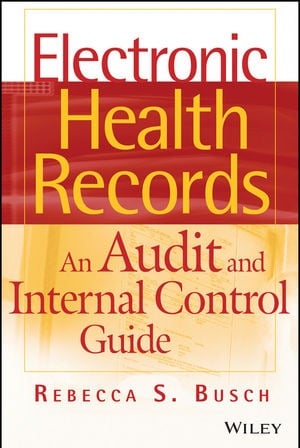FIHFAA: Electronic Health Records: Audit and Internal Control Guidelines
By: dr. Intan Widayati, MA || Editor: Dr. H. Ahyar Wahyudi, S.Kep.Ns, M.Kep, FISQua, FRSPH, FIHFAA


Health information management is becoming increasingly important in today's digital age. In the book "Electronic Health Records: An Audit and Internal Control Guide" by Rebecca S. Busch, we are introduced to a rich source of guidance for healthcare professionals involved in the use and management of electronic health records (EHR). This book not only discusses the importance of ensuring the security, integrity, and accuracy of data in EHR systems, but also provides effective audit strategies, internal control guidelines, and how to respond to audit findings.
In this regard, there are several aspects that are the main focus. First of all, data security is a top priority. In a world filled with privacy concerns, it is important for healthcare organizations to maintain the confidentiality of patient medical information. However, challenges arise in the form of access management, data encryption, and adequate policies.
An effective audit approach is also highlighted in this book. Identifying risks, checking controls, and responding to audit findings are critical steps in ensuring security and regulatory compliance. Regulations, such as HIPAA in the United States, place a great responsibility on healthcare organizations to ensure compliance with strict privacy and security standards.
In addition, the use of EHR is integrated with improving the efficiency and quality of healthcare services. However, it is important to understand that the implementation of this technology is not without challenges. From a technical perspective, interoperability with other systems and data security remain issues that need to be addressed.
In the case of Indonesia, where efforts to unify health data in a centralized platform are being undertaken by the government, this book becomes even more relevant. The process of integrating health data from various health service providers is a major challenge that needs to be addressed with appropriate policies and effective management.
However, this book also has some shortcomings. For example, in highlighting audit and internal control strategies, it may not pay enough attention to the social and ethical aspects of EHR use. The psychosocial implications of managing electronic health information also need to be carefully considered.
In terms of methodology, this book combines literature reviews, case analyses, and expert consultations to provide a comprehensive view. However, there is room for further research, especially in examining the social and psychological impacts of EHR use.
The lessons learned from this book are invaluable to health professionals in Indonesia, especially those involved in health facility accreditation efforts. Implementing best practices in EHR management not only improves operational efficiency but also protects patient data privacy and security. By understanding the challenges and strategies discussed in this book, healthcare organizations can improve their systems to support better overall health information management.
However, these efforts must also be strengthened with support from institutions such as LAFKI (Indonesian Health Facility Accreditation Institute), which can provide the necessary guidelines and standards to ensure that EHR management practices are in line with national and international standards.
In a broader reflection, this book encourages us to consider not only the technical aspects of EHR management, but also its social, ethical, and legal implications. Integrating health data on a national scale requires a holistic and sustainable approach, with a focus on patient interests and compliance with relevant regulations.


